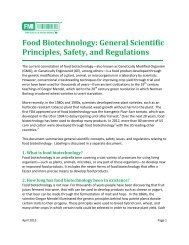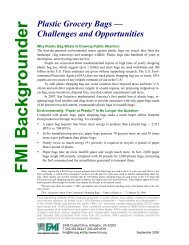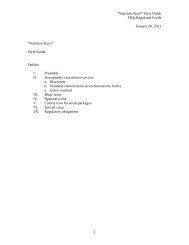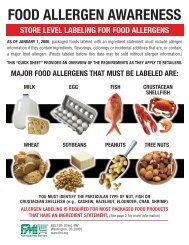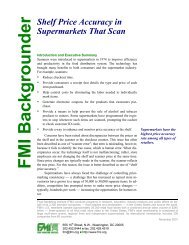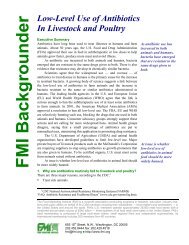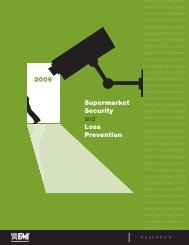Consumer Shopping Habits for Wellness and Environmentally ...
Consumer Shopping Habits for Wellness and Environmentally ...
Consumer Shopping Habits for Wellness and Environmentally ...
Create successful ePaper yourself
Turn your PDF publications into a flip-book with our unique Google optimized e-Paper software.
Br<strong>and</strong> <strong>and</strong> Product Offerings<br />
While there is no real correspondence between this category <strong>and</strong> the H+W continuum, there is<br />
certainly enough evidence to suggest that moving toward recycled products, wherever possible,<br />
would be worthwhile <strong>for</strong> both the manufacturer <strong>and</strong> the retailer.<br />
Sporting Equipment<br />
H+W Resonance<br />
Sporting equipment has a direct link to fitness, but not to H+W, outside of occasional clichés such as<br />
the yoga mat that would commonly be associated with the Core H+W consumer. We say this<br />
because consumers rarely express a H+W lifestyle through increasingly sophisticated articulations of<br />
products in this category. One does not buy a ―healthier‖ version of a football (though one can<br />
certainly purchase a higher grade of ball). In many ways, we also find that the most overtly fitnessoriented<br />
consumers tend to exist in the Periphery <strong>and</strong> focus on weight management rather than a<br />
more holistic sense of H+W. These consumers may evolve to higher levels of H+W, but not through<br />
sporting equipment. While advanced Mid-Level <strong>and</strong> Core consumers are quite physically active, they<br />
often make little use of equipment.<br />
Purchase Criteria<br />
Purchasing of sporting equipment varies depending on the subcategory of goods under<br />
consideration. For Periphery consumers, price will always be a key driver. However, factors outside<br />
of the World of H+W often strongly come into play, as the influences of other Worlds of activity make<br />
themselves known. For instance, a consumer‘s level of involvement in ―The World of Cycling‖ will<br />
exert a strong influence on how that person buys bikes <strong>and</strong> accessories. A Core Cycling consumer in<br />
that will buy a $4000 bicycle based on numerous technical attributes; a Periphery Cycling consumer<br />
will not.<br />
Br<strong>and</strong> <strong>and</strong> Product Offerings<br />
For the most part, appropriate br<strong>and</strong> <strong>and</strong> product offerings should be built upon intended appeal to<br />
consumers‘ involvement in Worlds other than H+W. In any case, we would not suggest that any<br />
channel in this study (Grocery, Drug, Mass, Club) offer products appealing to consumers very far into<br />
any of those worlds. In other words, concentrate most on Periphery offerings in those worlds, such<br />
as entry-level bikes <strong>and</strong> accessories.<br />
Toys <strong>and</strong> Games<br />
H+W Resonance<br />
Toys <strong>and</strong> games have little direct relationship with H+W, however, some more involved H+W<br />
consumers do of course have preferences <strong>for</strong> certain types of toys <strong>and</strong> games, generally what could<br />
be classified as ―learning-oriented‖ versions. Those same consumers will also tend toward<br />
purchasing noticeably fewer toys overall, <strong>and</strong> buy ―less disposable‖ toys <strong>and</strong> games made of natural<br />
<strong>and</strong>/or more durable materials. Similar to office supplies, there is an emphasis on ―less plastic‖ <strong>for</strong><br />
these consumers, relating to sustainability concerns.<br />
109




